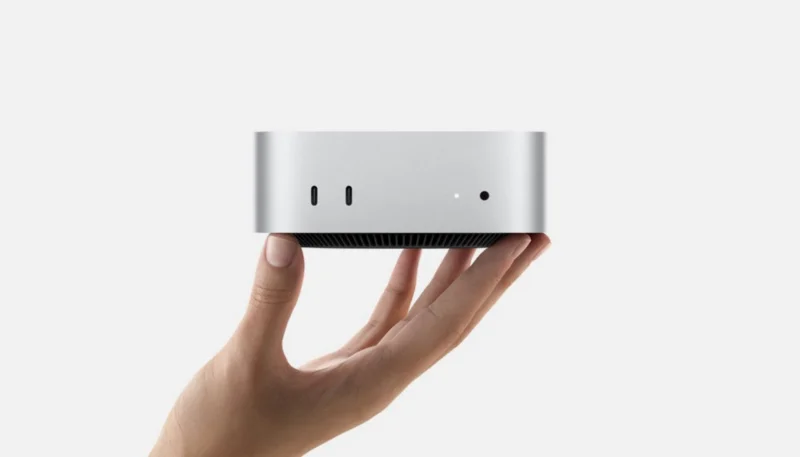Does the M4 Mac Mini Have an Upgradeable SSD?

The M4 Mac Mini has introduced an intriguing option for users curious about storage upgrades. Unlike previous models with permanently soldered storage, the M4 Mac Mini offers user-accessible SSD storage that isn’t soldered to the logic board. However, while this might seem like a green light for easy upgrades, there are a few important caveats to consider.
SSD Configuration and Accessibility in the M4 Mac Mini
One of the most appealing aspects of the M4 Mac Mini is its one-slot, dual-slot setup, capable of a maximum storage upgrade up to 2TB. The SSD uses a BGA315 interface and can support up to 1TB per module, making this setup similar to the separate SSD modules seen in the Mac Studio.
Despite this modular design, upgrading isn’t as straightforward as in some other desktop systems due to Apple’s proprietary SSD approach and technical constraints.
Differences Between M4 and M4 Pro Models
It’s important to note that the SSD modules are physically different between the M4 Mac Mini and models with the M4 Pro chip. This means you cannot interchange SSDs between these models, as they are designed with unique specifications. However, there has been some success with swapping SSDs between base M4 models, with iFixit managing to replace a 256GB SSD in an M4 Mac Mini with a 512GB SSD from another model.
Limited Upgrade Options Due to Proprietary SSD Design
One of the primary obstacles for M4 Mac Mini owners is that the SSD used is a proprietary Apple drive. At present, you can’t purchase a third-party SSD that’s guaranteed to work with the M4 Mac Mini, as you might with a PC or some other brands of computers. This limitation means users will need an Apple-specific SSD from another compatible Mac Mini model, or possibly a drive offered directly by Apple – though Apple hasn’t yet made such SSDs available to the market.
Potential for Third-Party SSD Compatibility
There is some hope that third-party manufacturers will develop compatible SSDs for the M4 Mac Mini. However, this unofficial solution carries risks: Apple could potentially lock out non-Apple drives with firmware updates, effectively limiting the use of third-party SSDs. Although no such restriction has been implemented yet while you still have the option for installing Mac Mini Dock with SSD support, the possibility remains, especially as Apple is known for tightly controlling its hardware ecosystem.
Cooling and Design Considerations
The M4 Mac Mini’s compact design includes a significant cooling setup, with a large fan and innovative heat management system. This cooling configuration ensures that power consumption remains controlled despite the small chassis, which is essential for the reliability of any installed SSD. Upgrading or replacing the SSD could potentially impact the airflow and cooling efficiency, making it another factor to consider in the process.
Final Though
In summary, while the M4 Mac Mini offers a user-accessible SSD with modular design and potential for upgrades, the options are limited by Apple’s proprietary hardware. For users needing extra storage, the safest route is using an SSD module from another M4 Mac Mini or waiting for official drives from Apple. Third-party SSDs may eventually become available, but compatibility and longevity with Apple’s firmware remain uncertain.
Ti potrebbe interessare:
Segui guruhitech su:
- Google News: bit.ly/gurugooglenews
- Telegram: t.me/guruhitech
- X (Twitter): x.com/guruhitech1
- Bluesky: bsky.app/profile/guruhitech.bsky.social
- GETTR: gettr.com/user/guruhitech
- Rumble: rumble.com/user/guruhitech
- VKontakte: vk.com/guruhitech
- MeWe: mewe.com/i/guruhitech
- Skype: live:.cid.d4cf3836b772da8a
- WhatsApp: bit.ly/whatsappguruhitech
Esprimi il tuo parere!
Ti è stato utile questo articolo? Lascia un commento nell’apposita sezione che trovi più in basso e se ti va, iscriviti alla newsletter.
Per qualsiasi domanda, informazione o assistenza nel mondo della tecnologia, puoi inviare una email all’indirizzo [email protected].
Scopri di più da GuruHiTech
Abbonati per ricevere gli ultimi articoli inviati alla tua e-mail.
